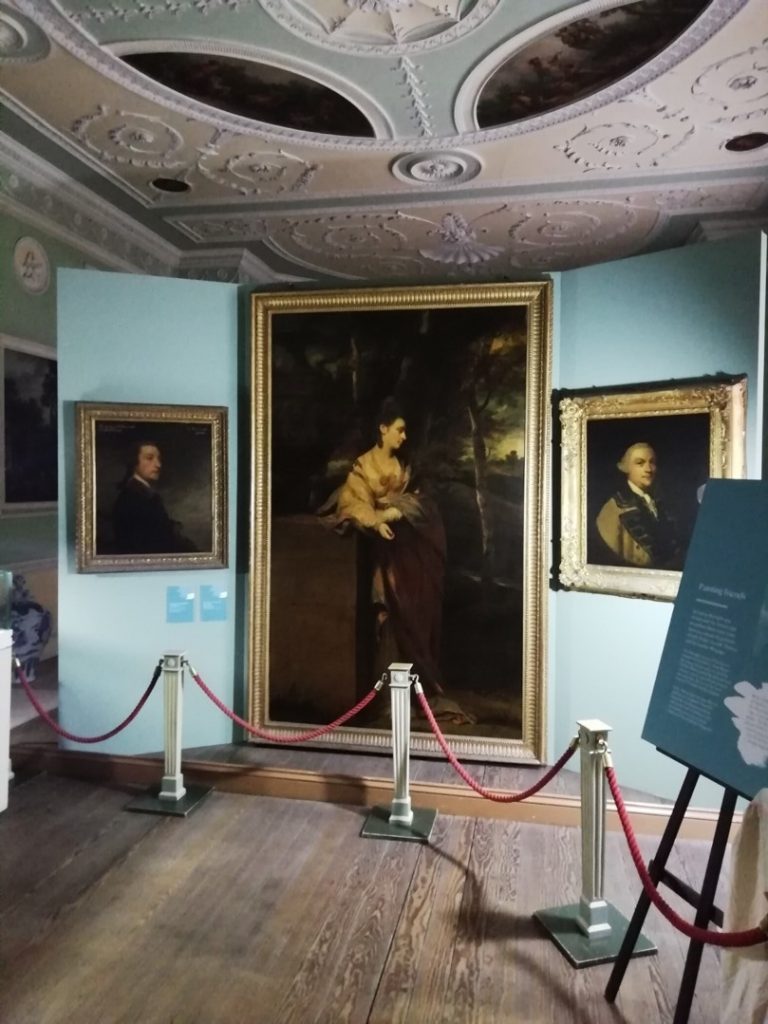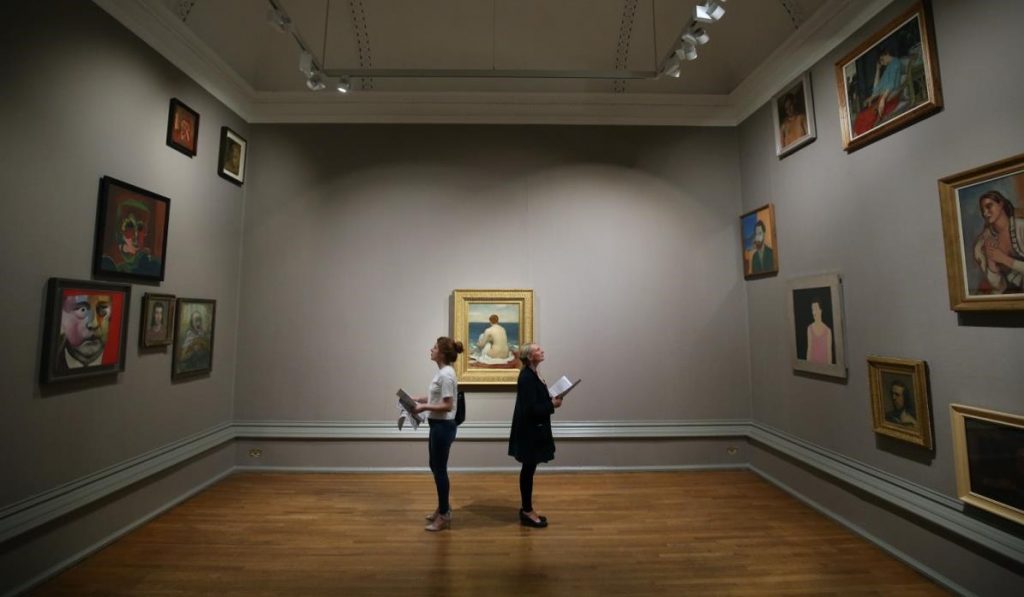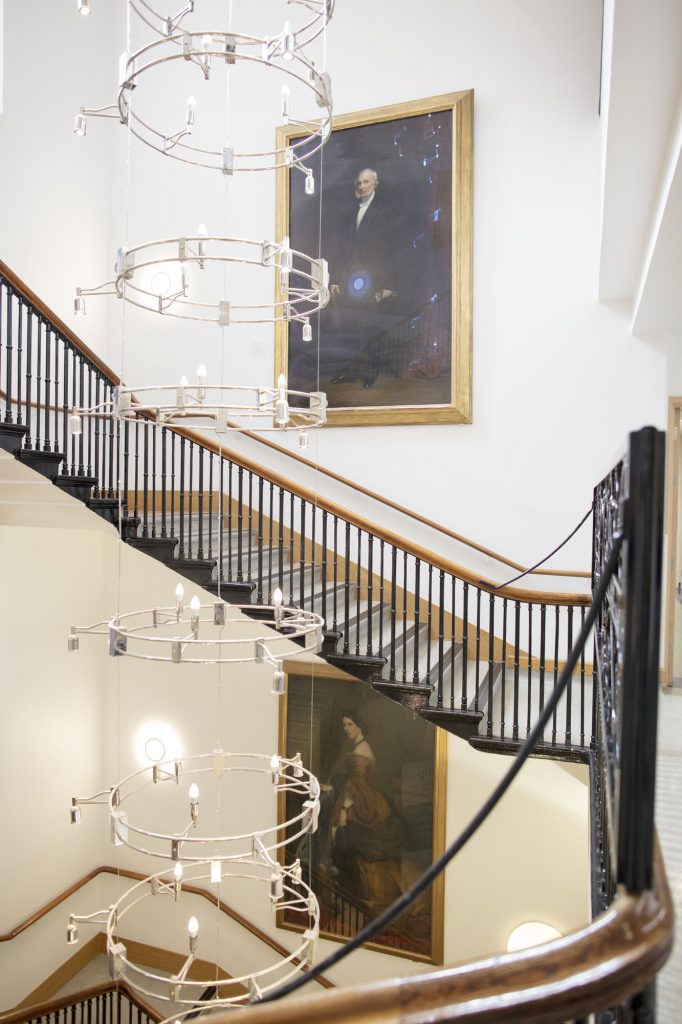Thoughts on Understanding British Portraits Annual Seminar 2018 by Ben Hartley

William Marsden (1796-1867) by English school, mid-nineteenth century. The Royal Marsden NHS Foundation Trust, Chelsea.
As custodian of British portraits that form part an NHS arts collection, I have been a member of Understanding British Portraits for some time.
This year’s Annual Seminar was the second I have attended and I was interested to follow new research findings from the network and hear the speakers’ curatorial case studies. As a curator in healthcare I sometimes have to think about being a museum professional in an abstract way; hospitals are unique spaces for viewing art, and the normal gallery rules often don’t apply!
I am privileged to be working in these unique spaces on projects with artists and other healthcare professionals that might offer an audience – some of whom are ‘accidental’ – what may be their first opportunity to engage with the arts. At the seminar I learned from my colleagues in other sectors how this might be achieved.
For example, in our hospitals we run a programme of temporary exhibitions, although these are a rather more contemporary addition to our static collections, largely made of heritage items. On the day, Alison Cooper (Curator, South West, National Trust) talked about temporary displays in National Trust Saltram, which has been celebrating 250 years of the Royal Academy through works by two of its founding members – Sir Joshua Reynolds and Angelica Kauffman. Alison talked about some key portraits in focus and also offered a curatorial case study regarding the challenges and opportunities of curating within such an historic setting.
One key point Alison made that stuck with me was to use these temporary shows as opportunities to “complement not compromise”. She talked about being respectful to the audience, some of whom may likewise be experiencing artwork for the first time (as “out and abouters”) whilst others may be seasoned and loyal gallery visitors.

Display installation view, Saltram, Devon © Alison Cooper, National Trust
This struck a chord as we are currently looking at gaps in provision for our hospital audience, and are finding out what a diverse contingent our ‘users’ are. Practical tips were to use opportunities like conservation to create new encounters, and think carefully about where visitors dwell.
Thinking creatively around how to meet the needs of different audiences, in terms of time available, is also particularly prescient in healthcare, where the collection may be spread across areas of high footfall but also spaces where people may be static for days, weeks and even months – such as long-stay wards. Engagement with art, and having a diverse collection, is one way to avoid people in these situations feeling institutionalised.
This link between viewer and identifying with the collections and exhibitions within an institution was explored further in the talk by Rachel Dickson from the Ben Uri Research Unit for the Study of the Émigré Contribution to British Visual Culture from 1900, who provided a fresh examination of an historical image, linking it powerfully to the present day, and highlighting the importance of family archives and memory. It made me realise that the recording of similar individual stories can be problematic in healthcare, where privacy and safeguarding predispose us to relying on pluralised storytelling rather than the subjective experience – images devoid of people such as landscapes and still lifes being preferable to portraits within the collection, for example.
In terms of innovative ways to work with what may be considered a conservative collection, Bethan Lewis, Arts Council Collection National Partners Programme, Walker Art Gallery, discussing the current exhibition ‘Leo Fitzmaurice: Between You and Me and Everything Else’ provided much food for thought.

Installation view of ‘Leo Fitzmaurice. Between You and Me and Everything Else’, Walker Art Gallery, Liverpool © National Museums Liverpool
The commissioning of a contemporary artist to use the collection in such a fascinating way really impressed me, as someone who has no larger-scale commissioning experience. In terms of showing how effective this can be for fresh ways of looking at a collection, collaborating with other collections, and engaging people within spaces, it is really innovative programming. Bethan touched on exhibition legacies – again something new to me and not much discussed within the healthcare environment.
That said, engagement with the arts is integral to health provision, healthcare environments, and supporting staff, and wellbeing can be increased if hospitals are more artful organisations, according to last year’s All-Party Parliamentary Group on Arts, Health and Wellbeing.

Stairway, The Royal Marsden NHS Foundation Trust, Chelsea. The portraits are of hospital founder William Marsden (1796-1867) by English school, mid-nineteenth century (above), and hospital benefactor Baroness Burdett-Coutts (1814-1906) by circle of Sir Francis Grant, PRA © The Royal Marsden NHS Foundation Trust
The contemporary curating practices demonstrated at this year’s Understanding British Portraits Annual Seminar will help me explore related health discourses and make junctions that allow different ‘elements’ within my organisation to connect. I’m hoping it will help me to be a less risk-averse curator, and inform my research about how one can as a curator generate discussions that operate socially in some critical way through art. The seminar showed how our activities can create an alternative ground for debate and critical reflection beyond the mere presentation of artworks, and perhaps enabling different and often underrepresented voices to speak and be heard. This will help us to provide good-quality services and develop user-focused and effective learning experiences for all of our stakeholders.


